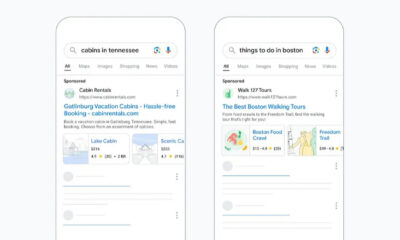MARKETING
How to Create a Budget for Paid Ads

Creating a budget for paid ads can be challenging, especially if you are new to the field. With so many different platforms and types of ads available, it can be difficult to know where to start. The good news is that there are some tried-and-true methods that work well for most businesses. In this blog post, we will look at the best way to create an ad budget and maintain profitability.
Find Your Profit Margin & Lifetime Value
First, you need to find out what your profit margin is for your product. The reason is so we can determine how much we can spend to acquire a customer. To find your profit margin, take the price of your product and subtract all of the costs associated with acquiring a customer.
For example, if it takes $100 to acquire a new client (i.e., ad spend plus cost-per-click) but each customer brings in an average profit margin of $120, you would want to adjust your budget so that each new customer costs less than $100. In this case, you would want to set your budget at $99 or less in order to be profitable.
You can also calculate your lifetime value (LTV) to get an idea of how much you can spend on acquiring new customers. To do so, divide the average profit margin by the churn rate. For example, if you spend $100 to acquire a customer but make an average of $120 each year for the next three years (i.e., your churn rate is 25%), then your LTV would be about $40 ($120 / 0.25). This means that it’s best to set your budget at around 40% or less of your LTV.
From here, you now need to should determine how many new customers you would like and base the total budget around that. So if it costs you $100 for a new customer and you want 10 new customers within the next month you would need a budget of $1000 to achieve that goal.
Remember this does not guarantee you will get that number and you could very well surpass that depending on your offer and how much you can optimize your conversion rate.
Be Smart About Your Budgeting Process
Another way to determine a budget is by looking at the return on ad spend (ROAS) for any given campaign or platform. Calculating ROAS can be tricky, as it varies from business to business and depends on what you are selling, where you are selling it, and a variety of other factors. However, if you have historical data that you can use as a guide, then you can come up with a tentative budget for your next ad campaign.
For most businesses, a 3:1 ROAS is the first goal as that will cover the product and marketing expenses. This is also the mark where profitability is achieved.
Once you’ve determined your profit margin, LTV, and ROAS goals, it’s time to start allocating money to paid ads. In most cases, it’s best to start with a small budget and increase your investment as the campaign progresses. In some instances, you may want to spend more money on certain platforms or campaigns than others so that you can see which works better for your business.
In addition to setting budgets based on ROAS goals and LTV targets, there are other factors you can consider when allocating ad spend. For example, you may want to target certain platforms or demographics based on where your ideal customer is located or what they are interested in.
Creating a budget for paid ads can be challenging, but it’s important to remember that there is no one-size-fits-all approach. By taking the time to find your profit margins, LTVs, and ROAS goals you can create a budget that works best for your business.

EJ Saunders
EJ has been in the digital marketing world since 2008 and founded his company Blaze Digital Solutions in March of 2020. Over the years he has worked with a variety of different businesses and is personally responsible for generating well over $10 million in sales with digital ads and SEO.
EJ and his team at Blaze Digital act as a bolt on marketing team and help their clients businesses scale. His mission is to help at least 10 businesses generate $10 million annually in the next 10 years.
Source link


















You must be logged in to post a comment Login